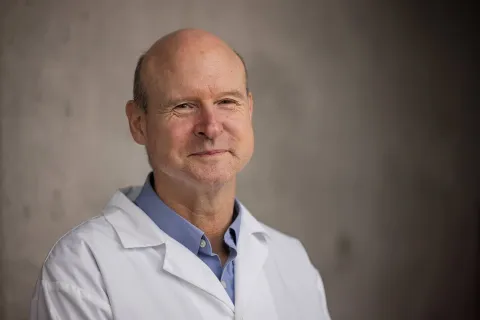“I want my work to be part of a larger narrative and to have a positive impact in the world.”

- Program:
- Campus: Vancouver
Website: Department Profile
Education: PhD in Mechanical Engineering (MIT); MEng in Biomedical Engineering (McGill); BSc in Physics (UBC)
Why did you decide to study engineering?
Perhaps that’s the connection to my interest in literature: that I want my work to be part of a larger narrative and to have a positive impact in the world.
English literature was probably my favourite class in high school and I wasn’t sure what I wanted to study in university. I ended up doing an undergraduate degree in physics because I thought it was a good choice for a general subject. But the career pathways I saw leading on from physics didn’t appeal and I moved into engineering for my master’s degree. I studied Biomedical Engineering at McGill with a professor who was developing micro-robots for surgery. The dream was that we would be able to create something very small that could be released into the body and travel through the bloodstream to perform surgery. It was an inspiring vision.
Biomedical Engineering Physics Undergrad Program
Do you hire undergrads to work in your lab?
Definitely. In the summers we often have five to seven undergrads working with senior PhD and master’s students. For the artificial skin project, for example, we have two main areas of need. One is building sensors, which involves a lot of 3D printing, molding, bonding, patterning and laser machining, and then the second is building the electronics on flexible printed circuit boards.
We look for students who have experience with design, circuit board testing and soldering. We also need people who can perform finite element simulation, develop the software, firmware and the display, as well as apply signal analysis and machine learning.
Undergraduate Research Experience
What skills do students develop as engineers?
Over the course of their engineering degree, students develop problem-solving approaches and systems-level thinking.
While a scientist generally starts with understanding an issue and then may move through to the application, an engineer generally starts with a problem that needs solving and then determines what they need to know, and how to put that knowledge together to solve the problem.
Engineers often need to create mathematical models, from which they develop designs, test predictions and so on.
Any advice for students?
Learning how to think as an engineer is valuable wherever life takes you.
I think it’s valuable for all engineers, regardless of specialty, to learn some electronics and software. Everything is becoming “smart.” If you look at an automobile, the value of the electronics and sensors exceeds the value of the mechanical parts of the car. Also, as an engineer it’s important to realize that you may start out in one discipline, but that’s not necessarily where you’re going to end up.








